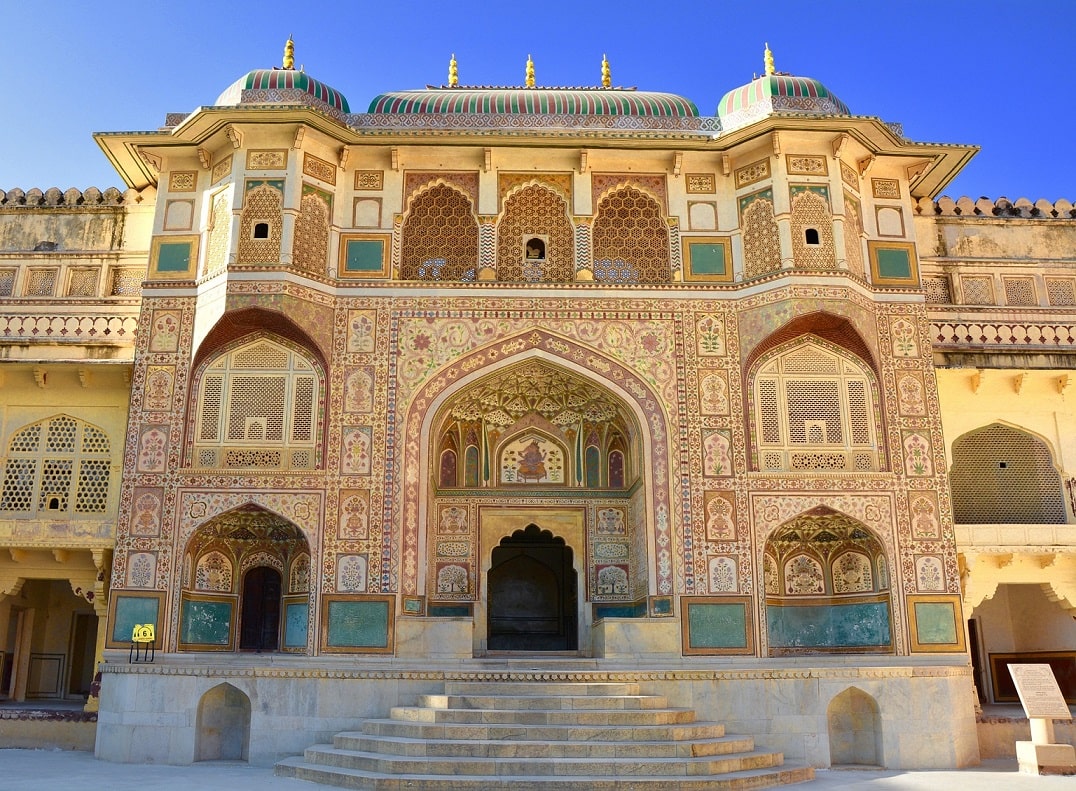Forts in Jaipur: Discovering the Majestic Heritage
Introduction:
Jaipur, the Pink City of India, is renowned for its magnificent forts that stand as architectural marvels and proud remnants of its glorious past. These imposing structures reflect the rich history and valor of the Rajput rulers who once ruled the region. Embark on a journey through time as we explore the forts in Jaipur, each with its unique charm and intriguing tales, making them must-visit destinations for history enthusiasts and travelers alike.
Jaipur Forts: A Glimpse into the Past
- a) Amber Fort (Amer Fort):
Among the most iconic forts in Jaipur, the Amber Fort reigns supreme. Perched majestically on a hilltop, this 16th-century fort is a magnificent blend of Hindu and Mughal architectural styles. Its artistic elements, such as the Sheesh Mahal (Mirror Palace) and Diwan-e-Khas (Hall of Private Audience), leave visitors spellbound. The fort’s royal history and breathtaking views of Maota Lake make it a favorite among tourists.
- b) Nahargarh Fort:
Offering a panoramic view of Jaipur’s scenic landscape, Nahargarh Fort stands atop the Aravalli Hills, providing a strategic advantage during its time. The fort’s name originates from a local legend, attributing its construction to a spirit that haunted the site. Today, Nahargarh Fort is a popular destination for tourists seeking stunning sunset views and a glimpse of the city’s historical grandeur.
Best Fort in Jaipur: Jaigarh Fort
Jaigarh Fort, often referred to as the “Victory Fort,” holds a significant place in history for its impregnable structure. Built to protect the Amber Fort, Jaigarh boasts the world’s largest cannon on wheels, Jaivana, which showcases the engineering prowess of that era. The fort also houses museums that display an impressive array of weapons, artifacts, and armory.
Famous Fort in Jaipur: City Palace
Though commonly known as the City Palace, it includes several smaller forts, pavilions, and gardens within its complex. This splendid structure reflects a seamless blend of Rajasthani and Mughal architecture. The Chandra Mahal within the palace is still home to the descendants of the erstwhile royal family. Visitors can explore the museum and various sections of the palace, offering insight into the regal lifestyle of the bygone era.
Haunted Fort in Jaipur: Bhangarh Fort
While not technically located in Jaipur, the Bhangarh Fort is a short distance away and is often associated with chilling tales of being one of India’s most haunted places. The ruins of Bhangarh Fort have garnered a reputation for ghostly encounters, leading to restrictions on entry during nighttime. This eerie ambiance attracts adventurers and ghost enthusiasts seeking an adrenaline-pumping experience.
Conclusion:
The forts in Jaipur stand tall as proud guardians of the city’s illustrious past, each narrating tales of valor, intrigue, and architectural brilliance. From the regal splendor of the Amber Fort to the panoramic views from Nahargarh Fort, each stronghold offers a unique experience. Jaipur’s forts are not only a treasure trove of history but also a reminder of the city’s enduring heritage that continues to captivate visitors from around the world.
Introduction:
Jaipur, the Pink City of India, is renowned for its magnificent forts that stand as architectural marvels and proud remnants of its glorious past. These imposing structures reflect the rich history and valor of the Rajput rulers who once ruled the region. Embark on a journey through time as we explore the forts in Jaipur, each with its unique charm and intriguing tales, making them must-visit destinations for history enthusiasts and travelers alike.
Jaipur Forts: A Glimpse into the Past
- a) Amber Fort (Amer Fort):
Among the most iconic forts in Jaipur, the Amber Fort reigns supreme. Perched majestically on a hilltop, this 16th-century fort is a magnificent blend of Hindu and Mughal architectural styles. Its artistic elements, such as the Sheesh Mahal (Mirror Palace) and Diwan-e-Khas (Hall of Private Audience), leave visitors spellbound. The fort’s royal history and breathtaking views of Maota Lake make it a favorite among tourists.
- b) Nahargarh Fort:
Offering a panoramic view of Jaipur’s scenic landscape, Nahargarh Fort stands atop the Aravalli Hills, providing a strategic advantage during its time. The fort’s name originates from a local legend, attributing its construction to a spirit that haunted the site. Today, Nahargarh Fort is a popular destination for tourists seeking stunning sunset views and a glimpse of the city’s historical grandeur.
Best Fort in Jaipur: Jaigarh Fort
Jaigarh Fort, often referred to as the “Victory Fort,” holds a significant place in history for its impregnable structure. Built to protect the Amber Fort, Jaigarh boasts the world’s largest cannon on wheels, Jaivana, which showcases the engineering prowess of that era. The fort also houses museums that display an impressive array of weapons, artifacts, and armory.
Famous Fort in Jaipur: City Palace
Though commonly known as the City Palace, it includes several smaller forts, pavilions, and gardens within its complex. This splendid structure reflects a seamless blend of Rajasthani and Mughal architecture. The Chandra Mahal within the palace is still home to the descendants of the erstwhile royal family. Visitors can explore the museum and various sections of the palace, offering insight into the regal lifestyle of the bygone era.
Haunted Fort in Jaipur: Bhangarh Fort
While not technically located in Jaipur, the Bhangarh Fort is a short distance away and is often associated with chilling tales of being one of India’s most haunted places. The ruins of Bhangarh Fort have garnered a reputation for ghostly encounters, leading to restrictions on entry during nighttime. This eerie ambiance attracts adventurers and ghost enthusiasts seeking an adrenaline-pumping experience.
Jaipur Wax Museum Fort:
Located within the premises of the iconic Nahargarh Fort, the Jaipur Wax Museum Fort showcases an impressive collection of lifelike wax sculptures portraying historical figures, celebrities, and political leaders. This unique attraction adds a touch of modernity to the historical setting, making it a delight for visitors of all ages.
Fort Madhogarh:
A hidden gem among Jaipur’s forts, Fort Madhogarh offers a peaceful and authentic rural experience. This 400-year-old fort has been converted into a heritage hotel, allowing guests to relish the charm of traditional Rajasthani hospitality while savoring the rich history of the region.
Moti Dungri Fort:
Nestled amidst the heart of Jaipur, Moti Dungri Fort is a small but enchanting structure with a temple dedicated to Lord Ganesha. The fort’s name translates to “Hill of Pearls,” which aptly describes its appearance when lit up at night. While the fort itself is not open to the public, the temple and its surroundings offer a serene retreat for spiritual seekers.
Conclusion:
The forts in Jaipur stand tall as proud guardians of the city’s illustrious past, each narrating tales of valor, intrigue, and architectural brilliance. From the regal splendor of the Amber Fort to the panoramic views from Nahargarh Fort, each stronghold offers a unique experience. Jaipur’s forts are not only a treasure trove of history but also a reminder of the city’s enduring heritage that continues to captivate visitors from around the world.










